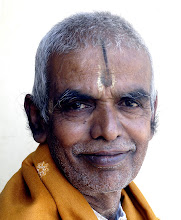HUBLI, 13TH Jan 2011.
Going by the reactions to its verdict on sharing of the river waters, IInd Krishna Water Disputes Tribunal appears to have achieved something, which the predecessor bodies were unable to resolve satisfactorily ever since the Inter State Water Disputes Act 1956 came into force.
The reaction in the three riparian states of
May be the three states embroiled as they are in their own internal problems of sorts, have hardly any time to spare to ponder over the implications of the final allocation made by the IInd Tribunal. The lone voice of dissent heard from Karnataka comes from the former Irrigation Minister Mr. H K Patil of Congress, who says that injustice has been done to Karnataka in the final allocation. Mr. Devegowda, the former Prime Minister is maintaining discreet silence on the alibi that he is yet to study the judgment. The Andhra Pradesh is toeing a cautious line, notwithstanding the fact that many of averments made by it have not been favoured by the Tribunal. Mr. Jagan Mohan Reddy's is the lone voice of protest heard from Andhra Pradesh that too belatedly.
But Andhra Pradesh has a built in advantage. Its position as the lower riparian states provides an access for the use of the unutilized share of water by the upper and middle riparian states flowing down the river. It has been doing so all along and will do so in future too, the laxity in the utilization of water being proverbial in the two states of
.
The first KWDT headed by Mr. Justice Bachawat went into the dispute and came out with its verdict in the early seventies. While apportioning the share from the agreed quantum of water of 2060 tmcft reckoned at 75 % (good rains in three out of four years), the Tribunal adopted the principle of protecting the utilisation in the basin states. Of the 2060 tmcft of water, 1693.30 tmcft came under protected category, with Andhra Pradesh getting the advantage accounting for 755 tmcft.
Of the 366.64 tmcft, which remained to be distributed, the Karnataka got more than half – 190.45 tmcft while
Since the full yield of water was yet to be assessed, the Bachawat Tribunal prepared what is called as B scheme, where it proposed that anything in excess of what has been allocated could be shared equally by the three states, though Karnataka has all along claimed that it was entitled for 50% of the surplus. The Bachwat Tribunal suggested that the three states through an agreement could set up Krishna Development Authority to manage the show. But the B scheme remained as a nonstarter, with Andhra Pradesh vetoing the same.
While picking up the thread from where the Bachwat Tribunal, had left, the IInd Tribunal made some significant changes in the approach. Though the Bachawat Tribunal had not spoken on the protection of the allocation and had merely said that “any review of revision, shall not as for as possible disturb any utilisation that may have been undertaken by any state within the allocation”. IInd Tribunal chose not to make the allocation and not utilisation as the basis and hence did not interfere in the allocation made out of the 2130 tmcft made by Bachawat Tribunal on the 75% dependability
The second Tribunal determined the total yield of the river at 65% (good rains in six half years in a ten year span) at 2293 tmcft at 65%. With the earlier allocation made to the tune of 2130 tmcft made by the first tribunal already protected, what remained to be distributed was only 163 tmcft . This is distributed as follows:
However in an average year of rains the Tribunal expects surplus flow of water in the river in the form of average yield determined at 2578 tmcft and 2293 tmcft of water already allocated. This brings into states kitty, an additional quantum of 285 tmcft, .which again is distributed among the three states: Maharashtra 35 tmcft, Karnataka 105 tmcft and Andhra Pradesh 145 tmcft, taking gross allocation of water for the three states to Maharashtra.: 666 tmcft and Andhra Pradesh: 1011 tmcft. The IInd Tribunal has made it clear that the surplus flow quota of water is available only in a normal year and not otherwise.
Besides there are two specific gains for Karnataka in the tribunals verdict. One has been that it long standing demand for the abolition of the Tungabhadra Board, an interstate board jointly of the Andhra Pradesh and Karnataka to manage the regulation of water for the right bank canal areas, which carries water to Andhra Pradesh This would become operative once the Krishna Decision Implementation Board suggested by the Tribunal is constituted by the Central Government. Second gain has been green signal given by the Tribunal for the raising the height of the Alamatti dam, the main dam across Krishna river in Karnataka, which had been pegged at 519 meters to 524 tmcft, as had been originally planned by Karnataka. This would enable Karnataka to store the surplus water available. And the minor gains include the green signal given for Singatalur and
Getting higher allocation of water is one thing and utilising the same within the specific time frame is another. The weakness of the upper and middle riparian states in the utilisation is too well known. This would certainly a gain for Andhra Pradesh, which has proved its capacity to utilise the allocation and plan for the use of surplus water already.
Eom 13.01.2011

1 comment:
An interesting analysis that puts the dispute in historic perspective.
Post a Comment